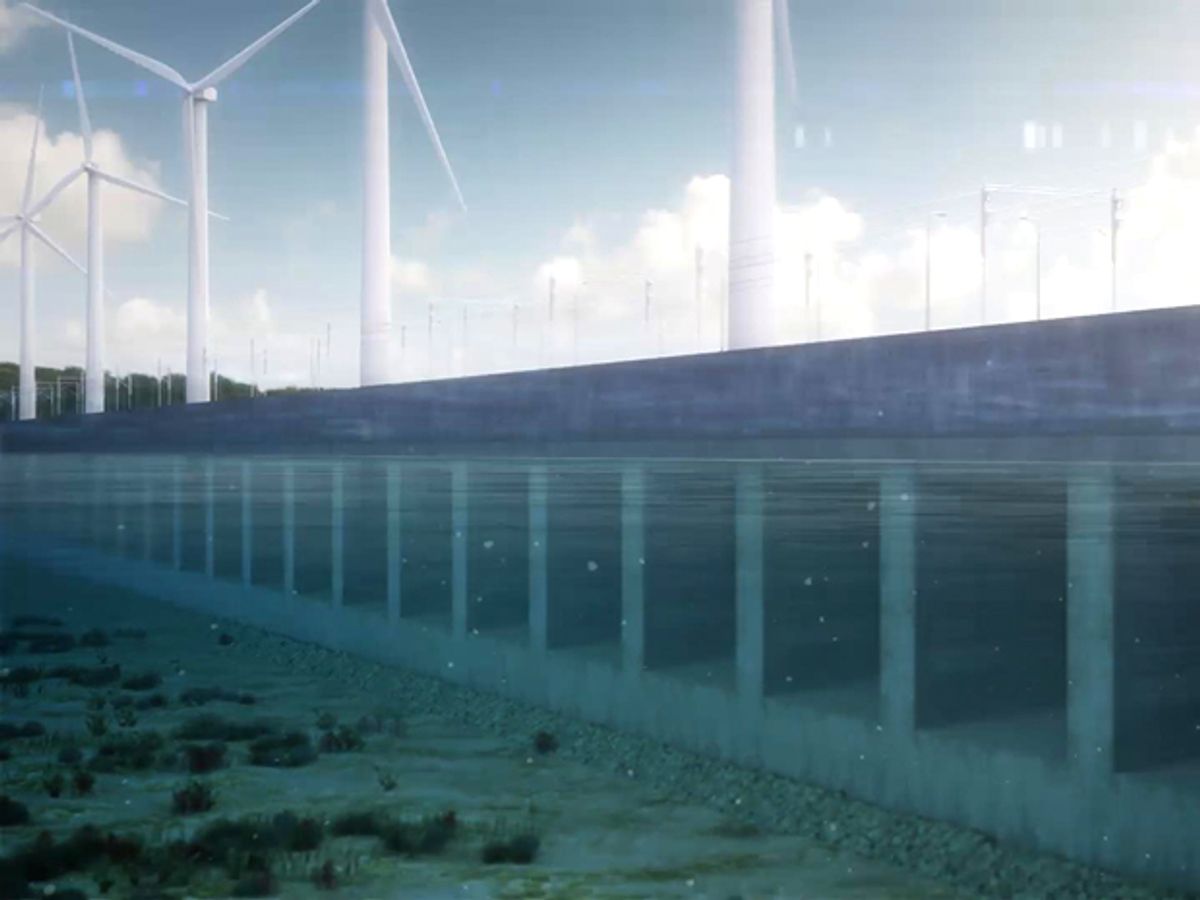The UK has some serious competition in the race to tap the ocean for energy.
China is increasing spending on tidal power, according to the Wall St. Journal and its largest project could outmatch any planned development in Europe. Currently, the UK is the leader in marine power, with a goal of 2000 megawatts installed by 2020.
The largest potential project in China is a US $30 billion tidal wall that could have an installed power base of about a gigawatt. The dam-like structure has turbines with curved blades that allow marine life to swim through while harnessing the energy in the water. The project has domestic and international backing, including from the Dutch government and eight Dutch companies, according to the Wall St. Journal.
Beijing has provided about $3 million for feasibility studies for the tidal wall, but the full project wouldn’t be built for at least a decade. The turbine wall would run perpendicular to the coast and then extend out in a T-shape, covering 30 kilometers. (Tidal currents on run parallel to China's coast.)
But there are other projects in the works. International firms, such as Lockheed Martin, are also entering joint ventures in China in the ocean power market. Lockheed Martin is developing a 10-megawatt ocean thermal energy conversion (OTEC) facility off the coast of southern China that is expected to cost US $300 to $500 million.
That technology takes advantage of the temperature difference in tropical waters between the warmer surface and the cold, deep water. In most OTEC systems, ammonia is vaporized as it passes through a heat exchanger containing the warm water. The vapor spins a turbine and then the ammonia is condensed using the colder water.
Overall, Beijing has spent about $160 million since 2010 on ocean energy, compared to Europe’s private investment of US$825 million since 2007, according to the Wall St. Journal. Tidal and wave power are attractive technologies because they can provide baseload power, which intermittent solar and wind power cannot do.
Despite the considerable investment, large-scale ocean power plants in any region have remained elusive. All tidal and wave technologies face considerable challenges, such as surviving in harsh, salty waters and being cost-competitive with other renewable energy options.
Scotland has found that tidal energy could supply half of its power needs, and is backing that up with the Saltire Prize, which will award $15.8 million in 2017 to one of the wave and tidal energy companies competing for the prize.
A few larger scale tidal projects are starting to move forward, although examples are still few and far between. A 250-MW tidal plant in Wales’s Swansea Bay recently had its plans approved by the government and is expected to begin construction next year. In South Korea, there are plans for an 810-MW plant, although there are environmental concerns.
The increased interest in marine energy from China could not only quicken development, but also open the possibility for technology disputes as has happened with wind and solar.
"Without a doubt, we will see a rise in the number of disputes between Chinese and foreign companies over renewables technology patents, including marine energy," Xiang Wang, a Beijing-based lawyer with Orrick, Herrington and Sutcliffe, told the Wall St. Journal.
Although disputes will likely arise, there are countless technologies vying for an opportunity to tap the inherent power of the seas and oceans, and more involvement from deep-pocketed governments and companies should only accelerate the pace to find commercial, cost-effective solutions.



